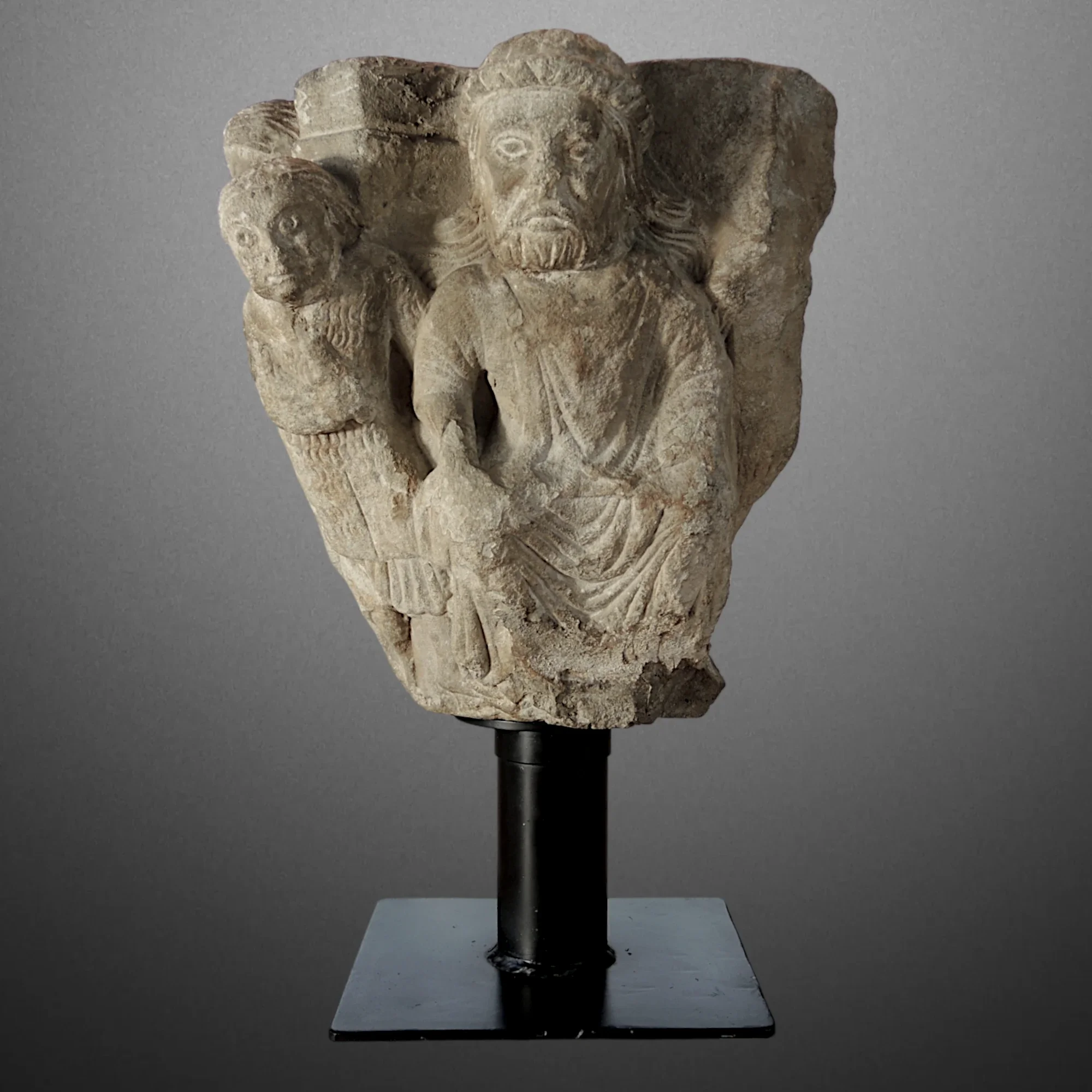Back to the artwork ref.278
Switch to full screen mode
Exit full screen mode

Origin: Provence, France.
Medium: Limestone.
Size: Height 30 cm (excluding base).
Period: 12th century.
Condition: Losses & restorations.
Price: on demand
Ref.278
Romanesque historiated capital in dolomitic limestone, carved in high relief on three figured faces, the fourth presenting a vegetal decoration. The main face shows King Herod seated in majesty, his bearded head with mid-length hair encircled by a diadem. The cheekbones are strongly marked, as in the Massacre of the Innocents on the portal of the cathedral of Saint-Trophime in Arles. The body, wrapped in a broad garment whose incised folds form characteristic V-shaped rhythms, emphasises the frontality of the figure. Next to the king, in the angle of the capital, stands a smaller soldier wearing a mail hauberk similar to those on the capital in the cloister of Saint-Trophime in Arles, which likewise represents the Massacre of the Innocents. The lateral faces develop the theme of the Massacre of the Innocents in a continuous narrative. On one side, a soldier in mail brandishes his sword above the bodies of the young victims, whose small size and nakedness accentuate the brutality of the action. On the other, the mothers are crowded into two registers, expressing panic and desolation.
The fourth face, probably turned toward a wall in the original Romanesque setting, is distinguished by a more sober decoration: a simple abacus above broad lanceolate leaves or palmettes emerging on either side.
The composition makes full use of the curvature of the basket, the silhouettes continuing from one face to the next without interruption, following a narrative device frequent in southern Romanesque sculpture.
By its choice of subject, a dramatic episode from the Infancy of Christ, by the monumentality of the heads, the graphic treatment of the draperies and the taste for broad, expressive gestures, the work belongs fully to the corpus of Romanesque sculpture of the Midi in the second half of the 12th century, in close connection with the repertoires of Arles and Avignon (see also the capital in the Musée Granet, Aix-en-Provence, from the cloister of the cathedral of Notre-Dame-des-Doms in Avignon). Losses and restorations.
Full dossier available on request.
References:
· Jacques Thirion, “Le décor sculpté du cloître de la cathédrale d’Avignon”, Monuments et mémoires de la Fondation Eugène Piot, vol. 61, 1977.
· Andrew H. Chen, “Abigail and David, the iconography of a Romanesque capital from Notre-Dame-des-Doms, Avignon”, 2013.
· Géraldine Martin Orrit, “Le cloître de la cathédrale Saint-Trophime d’Arles, étude du décor sculpté”, 1990.
· “Du programme décoratif à la mise en œuvre. Les chapiteaux du portail et de la galerie nord du cloître de Saint-Trophime d’Arles”, in Apocalypse, visions et représentations à l’époque romane. Recherches récentes sur l’art roman, Revue d’Auvergne, 2002.